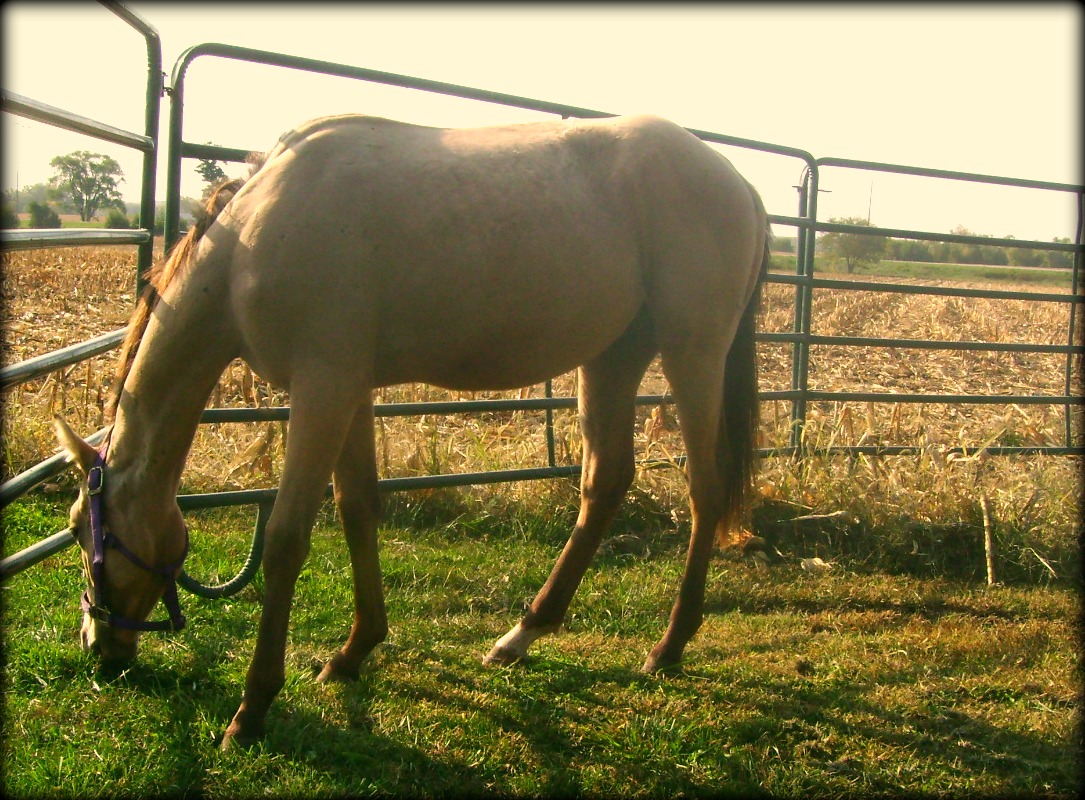 Usually my horse maintenance plan goes something like this: pitching hay morning and night and making sure they’re all walking on four legs. But sometimes horses require more than that. We had the vet come out the other day, to castrate our buckskin yearling stallion and check on his mother’s health. Both of the buckskins have lost body condition in the year that we have owned them, and we wanted to get a professional evaluation from a veterinarian on how to counteract that. We weren’t sure if it was a tooth problem or lack of adequate nutrition for the mare, and the colt needed gelded and is looking a little bony as well.
Usually my horse maintenance plan goes something like this: pitching hay morning and night and making sure they’re all walking on four legs. But sometimes horses require more than that. We had the vet come out the other day, to castrate our buckskin yearling stallion and check on his mother’s health. Both of the buckskins have lost body condition in the year that we have owned them, and we wanted to get a professional evaluation from a veterinarian on how to counteract that. We weren’t sure if it was a tooth problem or lack of adequate nutrition for the mare, and the colt needed gelded and is looking a little bony as well.
I called Dr. Corie England, from Corning, Iowa, who has a traveling veterinarian business called Gravel Road Equine Ambulatory Service. Since we don’t have any equine vets in the nearby area, it was really handy to have her come out to the farm and see the horses at our location. She arrived with her assistant, in a fully-stocked vet’s pickup—it even had water tanks to fill her buckets for sterilizing the surgical instruments. She asked a lot of questions about our horses, had me fill out and sign a treatment plan sort of form, and explained what kind of care would be best during and after the colt’s surgery.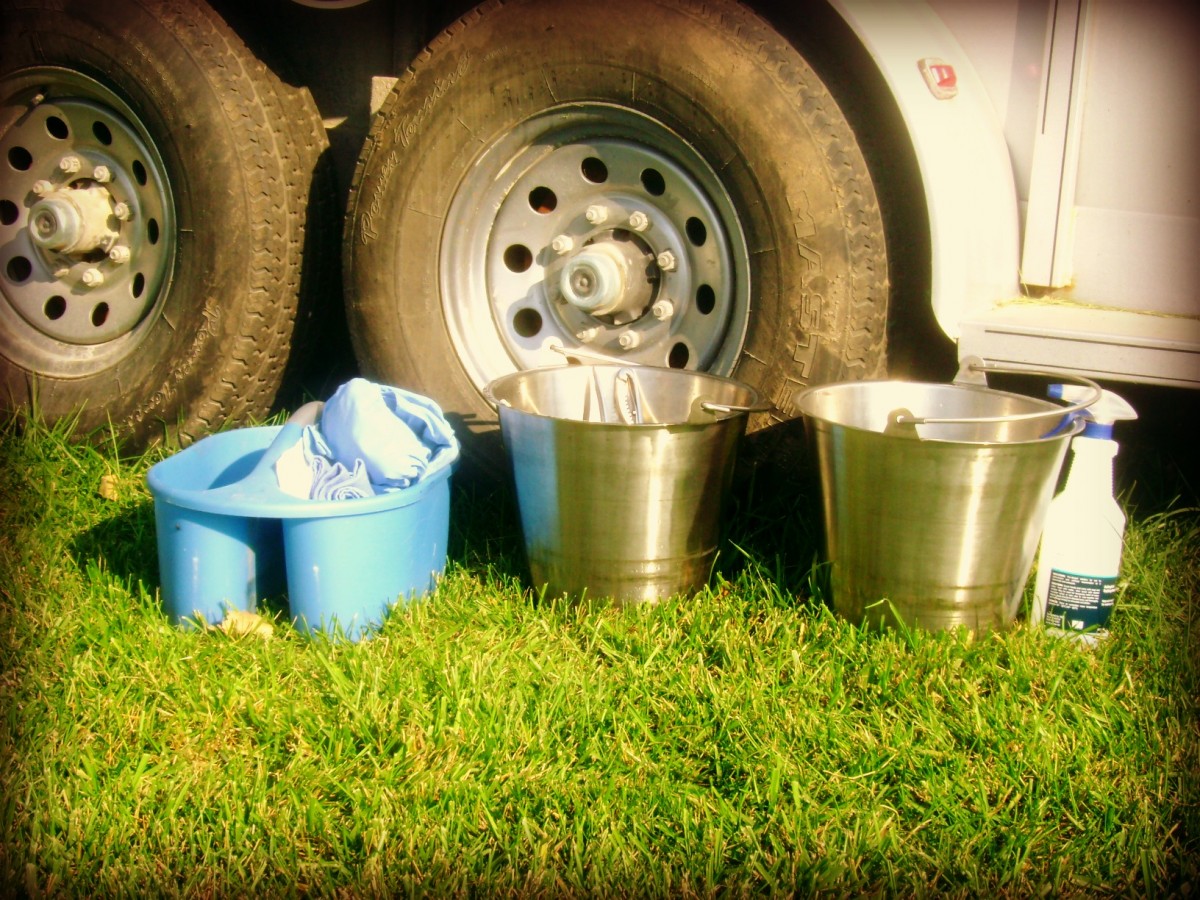
We had set up the round pen panels in a grassy spot so the vet would have a clean area to work in and the colt would be able to wake up on his own. He has been weaned for a year now, but has been pastured with his mother and is still emotionally attached to her, so we had her tied close by at the trailer while he was being treated.
The vet began with a basic evaluation, weighing him at 600 lbs and making sure both testicles had descended so that the surgery could take place. She said he is at adequate height for his age, but is in need of more protein and minerals in his diet, and suggested testing him for worms as well, since his belly seemed fuller than usual, and that could be a sign of roundworms. We have kept a pretty good deworming schedule, using an ivermectin paste, but sometimes worms can become resistant to that and still infest a horse. So she took a sample of his manure to test for that.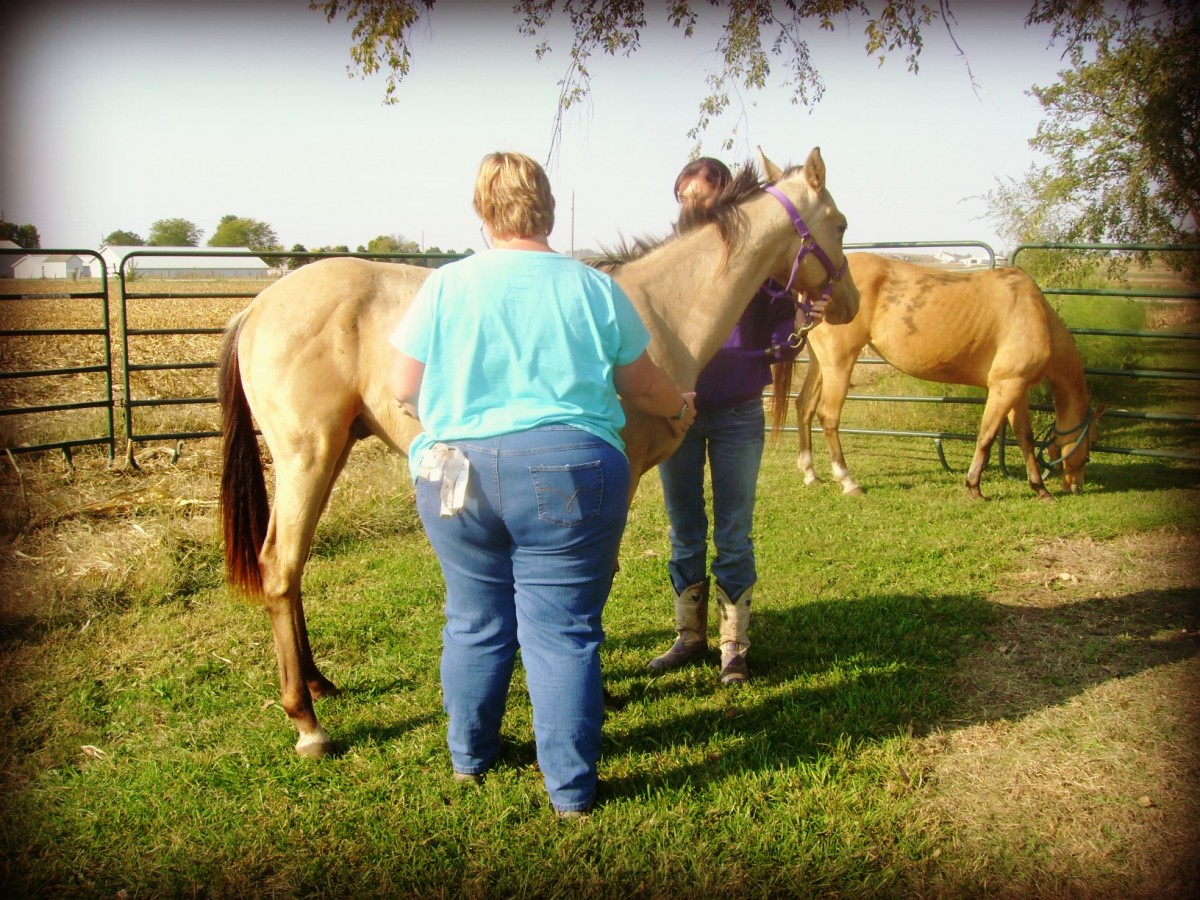
She gave the colt a tetanus shot, and then the drug that would put him to sleep during the surgery. He was pretty agreeable to it all, and began to slump and they helped him down as he fell, blindfolding him with a cloth over his eyes tucked into his halter. The assistant cleaned the area with the water and more cloths, and then held him on his back while the vet did the surgery. They used clamps to seal off the cut places for five minutes each to restrict the bleeding and encourage clotting. He was given banamine, as well.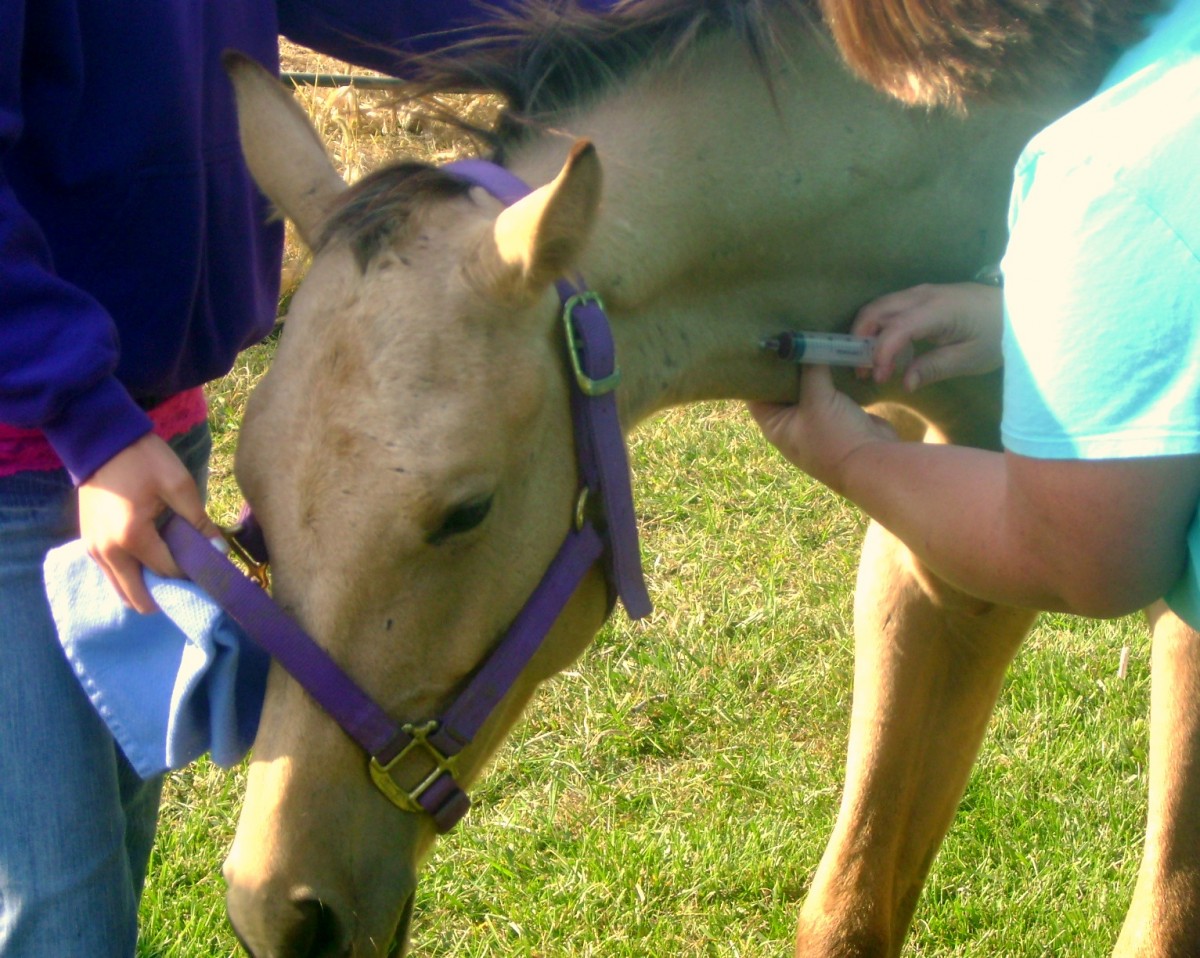
While he was asleep, the vet checked his teeth, explaining that sometimes young horses have wolf teeth that need to be removed. But his teeth were fine, and no wolf teeth were present, so everything looked good there. I really appreciated that the vet took the initiative to look for things I hadn’t even thought about. I did mention that if the colt was one that didn’t like to have his hooves trimmed, it would be the perfect opportunity to do so, while he was sleeping! But this little guy is our easiest horse to trim. He is very willing and quiet, and it’s easier to pick up a hoof on a horse that doesn’t weigh very much, so now is the time to train him on that. I had trimmed his hooves a few weeks prior to this visit, so it wasn’t necessary. He remained sedated for another twenty minutes or so, while the vet looked at the mare.
The mare was rather worried about her baby, lying flat on the ground with his face covered. She kept whinnying for him. The vet measured her, took her temperature, listened to her chewing, looked at her teeth, and said that there was no evident reason for her weight loss and that she was probably needing the same boost of nutrients that her foal needed. We had noticed a few months prior that she would take a bite of grain and then dribble most of it back out as she chewed, so we were thinking her teeth needed floated or pulled. But the vet said that other than looking older than the age recorded on her papers (the vet estimated her to be about eleven years old, but her papers say she is seven), her teeth looked fine and she appeared to be chewing correctly.
Dr. England said that there are four criteria that can cause weight loss in horses:
1. Worm infestation.
2. Tooth or jaw problems.
3. Inadequate nutrition.
4. Poor metabolism.
Since we had dewormed the mare two weeks earlier, at the same time as all of our other horses, we didn’t think worms were the problem. Her teeth had checked out fine, and since she was in fine health and a much bulkier shape when we bought her a year ago, we figured that metabolism wasn’t an issue—she should be a relatively easy keeper. So the consensus was that they are needing more feed than just the grass hay morning and night, and the vet suggested that we use a bagged feed called Strategy, as that would work for both the mare and her colt.
I believe that the underlying problem is that both horses are at the bottom of the pecking order in our herd, and they are getting pushed back during feeding times and not getting their fair share of the hay. While we do feed them a little corn most evenings, the vet explained that corn was simply a starch, and didn’t do a whole lot for their nutrition, just like humans eating starches and sugars. Our other three horses are nice and round, and are obviously getting as much as they need for the lifestyle they live, so it’s not that we aren’t feeding enough, it’s just that most of the feed is being eaten by the bossy horses in the herd.
So we picked up some bagged feed the next day, and have started them on it, and I also have made plans to build some fence across another area of the farm so that the two buckskins can have their own paddock and not have to fight for every mouthful they get. They are loving their new feed, and it’s already helping the mare to not be so shy when I go out to catch her—she’s learning she gets to come in and eat without the other horses bossing her! So I’m happy we’re taking these steps to improve our horses, and I’m excited to see the difference a little extra care can make.
The vet said a good way to track progress is to take photos of the horses frequently, and compare them. So here is the mare on the day of the vet’s visit: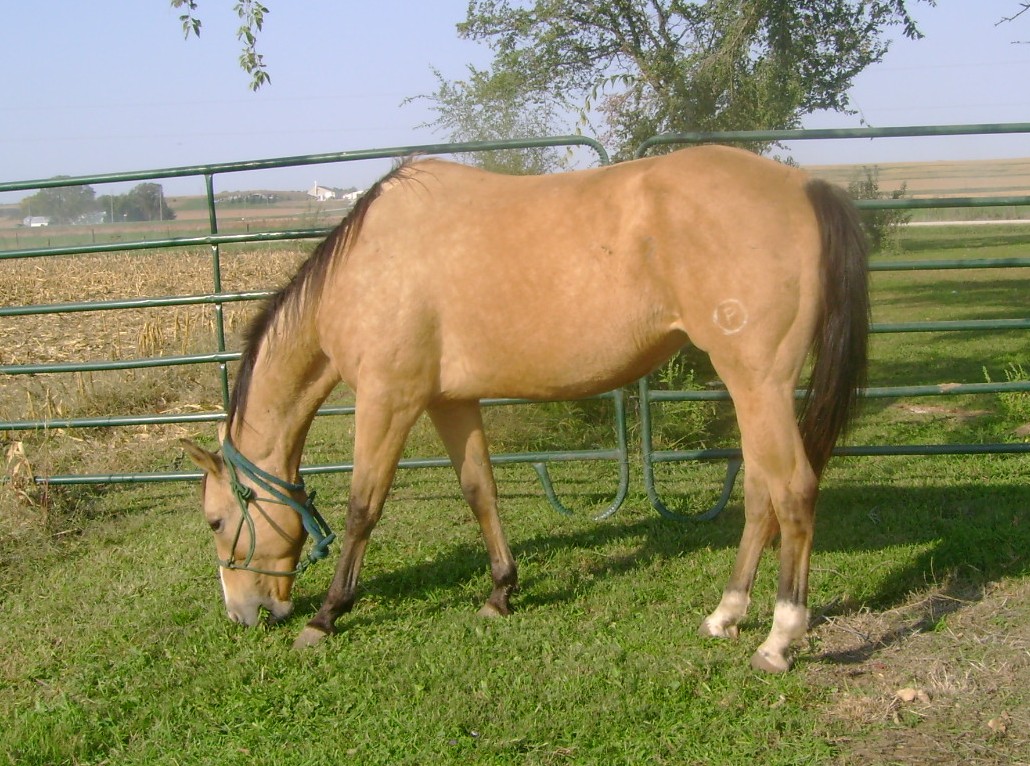
This photo is the very same day, but definitely shows her ribs more:
The colt is just growing so rapidly it might be hard to see a change, but I’d like to see better muscle on him, and a stronger topline, rather than him carrying his weight in his belly. Dr. England’s office called us soon after her visit, and confirmed that there were no worms in the sample they took, so that’s reassuring. We were really happy with her level of knowledge and expertise with the horses, and she really seemed to take extreme care to prevent infection and promote their wellbeing. In such a rural area, it’s a blessing to know we can call on Dr. England for help with our horses! You can see her website at GravelRoadEquine.com or visit her Facebook page here. I would recommend her services to anyone needing horse care.
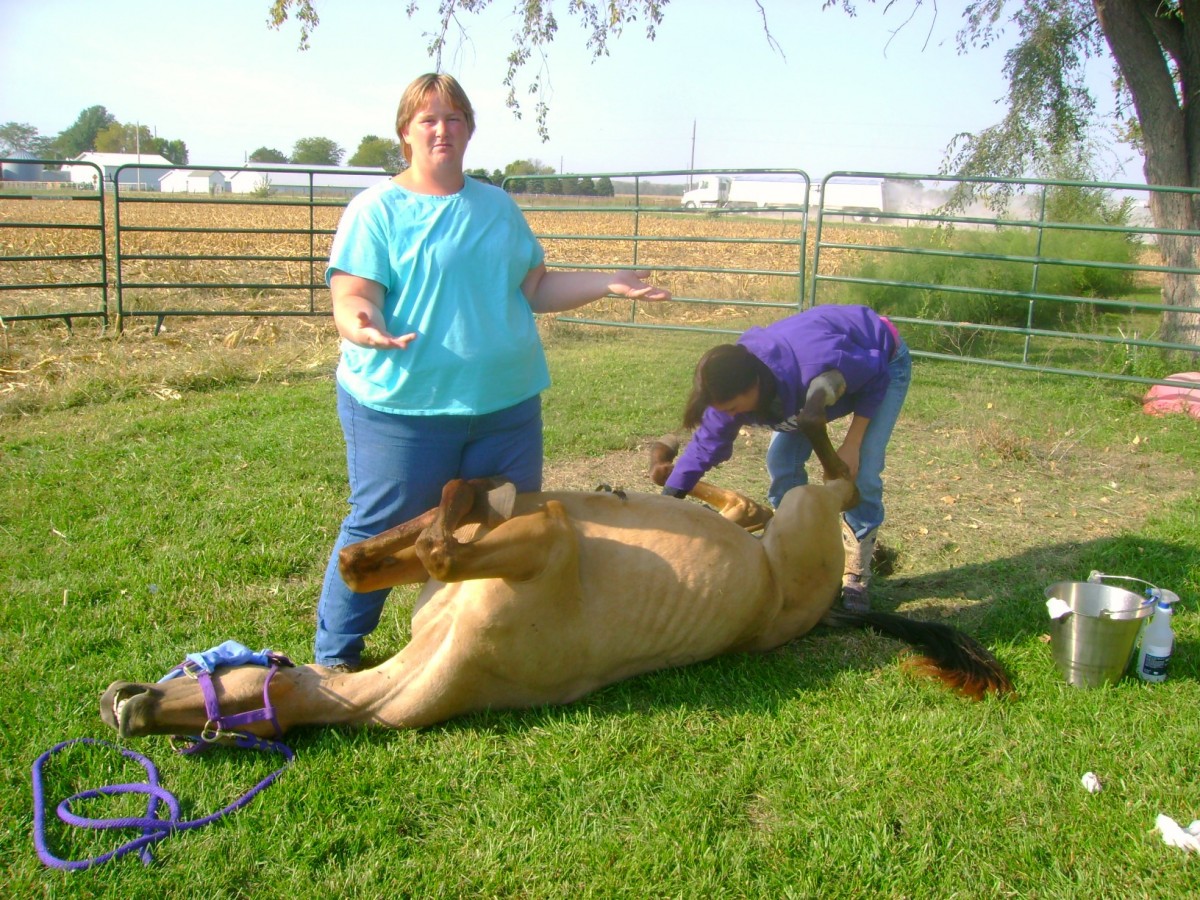
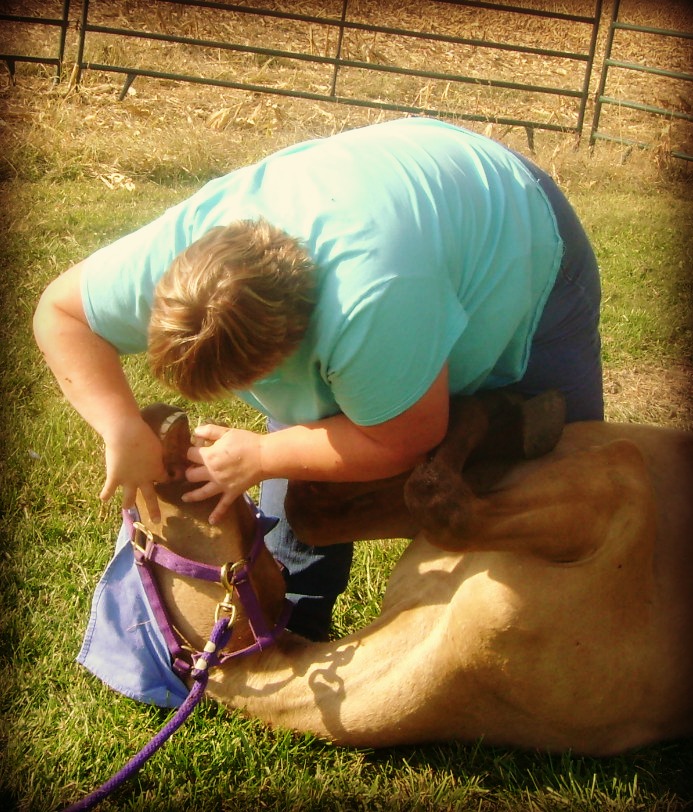
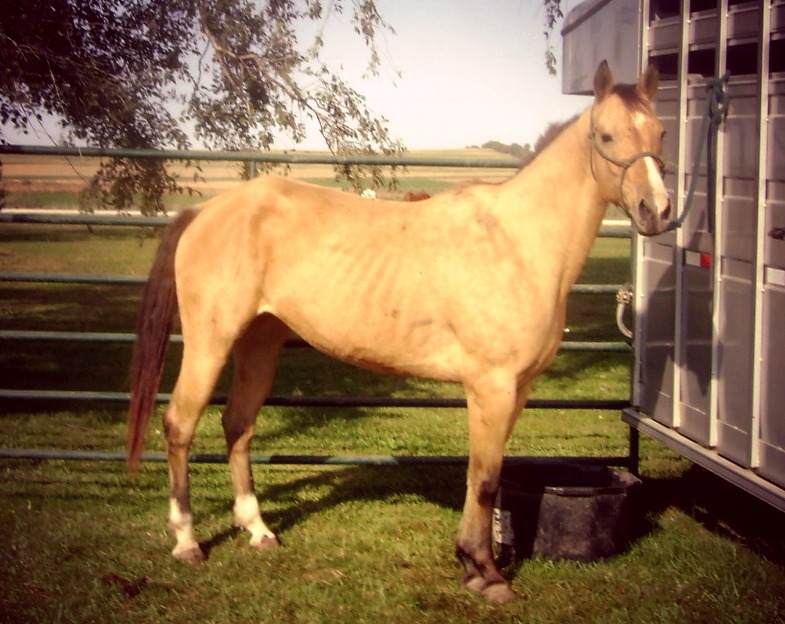

{ 1 comment }
very interesting, never got to see them do a procedure in the field before like that – so glad everything went well! Both horse are beautiful, but maybe just a bit thin. I think you’ll really like the strategy, we used to feed that when I lived in SC and the horses all did well on it. I was always taught that horses don’t do well on straight corn, it has little feed value in many areas too high a chance of developing mytotoxins (from microscopic mold). I have several horses that could live on just grass with a mineral supplement pellet (like Empower) but my App/TB has always been a hard keeper and needs more grass/hay than he can consume to keep weight on him. When he was younger, I used to feed him Strategy and it helped keep him in good weight without getting “hot”. Now that he is 27, I feed him a “complete” feed (Nutrena Senior) which can take the place of hay if necessary. He still has good teeth and grazes and eats his hay, but definitely can’t eat it fastest enough to get his share before his piggy-pasturemate eats it. So, feeding him 2 scps AM & PM of the complete feed, and free choice hay and grass keeps him shiny, glossy and in good flesh without overfeeding his pasture buddy. Good luck, and I’m looking forward to seeing their future pictures